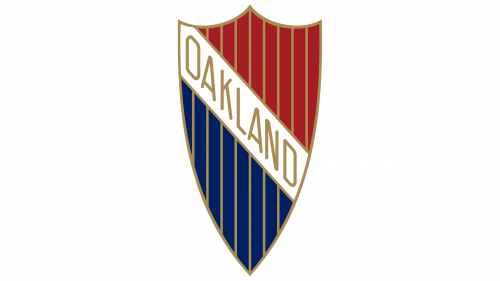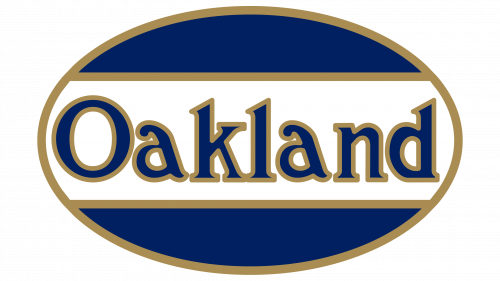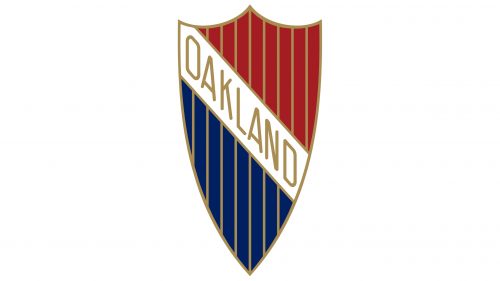The Oakland logo symbolizes the quality and reliability of the cars produced under this brand. Although the company, named after the county in Michigan, is long gone, its emblem remains a mark of high status and prestige.
Oakland: Brand overview
Oakland Motor Car Company’s history started in Pontiac, Michigan, in 1907. Edward Murphy, a prosperous carriage manufacturer, started the business after deciding to enter the quickly expanding automotive sector. Murphy named the business after Oakland County, which included the city of Pontiac.
1908, the company debuted its first vehicle, a two-cylinder runabout, at the New York Auto Show. The public was immediately drawn to this car because of its dependability and high build quality. About 278 automobiles were produced in its first year, which is considered a respectable number for a startup company.
In 1909, the manufacturer added a four-cylinder model to its portfolio, making it possible for the business to compete with other manufacturers’ more potent vehicles. An important thing happened that year: William Durant, the man who founded General Motors, became interested in the company. Seeing promise, Durant bought half of it.
A significant year in the company’s history was 1910. Following the untimely death of Edward Murphy, General Motors fully bought the business and included it as one of its brands. The manufacturer carried on with development and manufacturing expansion under GM’s direction.
In the 1910s, the company continued to refine its automobiles. The Model 42, which debuted in 1913 and had a novel left-hand drive, quickly became the norm in the US auto industry.
The company introduced its first six-cylinder engine in 1916. This development was noteworthy because it enabled the corporation to compete for more expensive and prestigious vehicles.
Like many other automakers, the manufacturer adjusted some of its output to satisfy military requirements during World War I. Since it produced parts for military equipment, the company could retain and even increase its manufacturing capacity.
The company continued to advance after the war. In 1923, it debuted the Model 6-54, which had four-wheel mechanical brakes, which at the time was state-of-the-art technology.
An important turning point in the company’s history occurred in 1926. The brand-new car line that the business unveiled was called “Pontiac,” after the location of the production facility. Pontiac aimed to provide a less expensive option to the manufacturer’s core lineup.
Unexpectedly, Pontiac proved so successful that sales quickly overtook the company’s main lineup, eventually leading to the brand’s phasing out.
The start of the Great Depression in 1929 presented significant obstacles for the car industry. Like many other firms, General Motors experienced financial troubles. Given these conditions, General Motors concentrated on the more popular Pontiac brand.
The last year the company-branded automobiles were produced was 1931. The brand was formally phased out in 1932, and all manufacturing was moved to Pontiac.
Even though the company was a short-lived brand, its legacy was carried on by Pontiac, which manufactured automobiles until 2010. Numerous engineering innovations and design concepts created by the manufacturer were used in later Pontiac models and other General Motors brands. The company’s automobiles are now highly prized and uncommon collectibles.
Meaning and History
What is Oakland?
It was an American automobile brand that, at the beginning of the 20th century, was part of the General Motors holding company. The company was a mid-priced automobile manufacturer well known for its reliability, durability, and affordability. The brand became famous in the automobile business for its cutting-edge designs and styling of its models at the time. Despite its short existence, it was a major player in the early history of the American automobile industry.
1907 – 1909
From 1907 to 1909, Oakland was a private company that chose its logo. In 1909, it became part of General Motors, partially and completely. The emblem with the inscription “PRODUCT OF GENERAL MOTORS” appeared no earlier than 1909, marking the transformation of an independent car manufacturer into one of GM’s many divisions.
Although the brand lost its independence, it retained its unique visual identity. Around that time, a logo was created with the name Oakland prominently placed in the center of a large horizontal ellipse. The absence of sharp corners speaks volumes.
- Firstly, it symbolizes the safety and comfort that the company consistently prioritizes.
- Secondly, the oval shape creates a sense of motion, hinting at the high speed of the cars.
- Thirdly, the emblem’s form reflects the time’s fashion, as rounded car badges were common in the early 20th century.
The inner part of the ellipse is dark blue, associated with royal luxury, impeccable taste, and reliability. A wide light brown frame with a floral pattern surrounds the outer side. It features a wreath of oak leaves topped with an acorn, referencing the brand’s name, “land of oaks.”
The design includes an unfurled scroll with the words “PRODUCT OF GENERAL MOTORS.” The inscription is in a simple, thin sans-serif font, appearing strict, restrained, and standard. In contrast, the word “OAKLAND” in the center of the oval is styled in a serif typeface. Each letter is white with a wide, light brown outline. The strokes have varying thicknesses, making the logo visually striking.
Thus, designers emphasized the cars’ dynamism with a well-chosen combination of fonts and shapes. The colors are combined to make the company’s name stand out against the dark background. All the details match the style popular in the early 20th century: even the emblem’s frame looks like antique plasterwork.
1909 – 1926
After the redesign, the Oakland logo became more versatile. The designers removed the acorns and leaves that connected the brand to Michigan County, which had the same name and focused on balancing geometric forms. They retained the oval base to maintain visual dynamism and brand recognition.
The oval provides perfect symmetry, evoking balance, calmness, and harmony. The logo’s color scheme reinforces this impression with a combination of white, blue, and dark gold. White symbolizes restraint and purity, while the blend of blue and gold creates an atmosphere of luxury, hinting at the impeccable quality and comfort of the cars.
The oval is divided into three parts, visually elongating it and adding dynamism. This design conveys a sense of boundless space and freedom of movement, even though the edge of the geometric figure is outlined in a gold stripe.
Particular attention is given to the word “Oakland” in the center. Previously white on a blue background, the colors have been reversed to make the inscription stand out. The new font highlights the company’s uniqueness, with letters featuring diagonal cuts and sharp serifs, giving an elegant look. The lowercase “a” is especially notable, with its main stroke inclined to the left. This style not only enhances brand recognition but also showcases its energy.
1926 – 1931
This emblem adorned the radiators of Oakland cars until 1931 when their production ceased. Unlike previous versions, it takes the shape of a triangular heraldic shield with two inverted arcs at the top. It lacks the smoothness of the oval, but visual dynamism remains in the prominent sharp corners and rounded indentations. The vertically elongated shield also adds to its dynamism.
A diagonal white stripe crosses the logo from top to bottom, dividing it into red and blue halves. This pays homage to the U.S. flag, reflecting the automaker’s authenticity and emphasizing its unique national character.
The name “Oakland” is written at an angle, with the letters arranged in a step-like fashion to fit within the shield’s boundaries. This layout evokes the image of a moving car, capturing the moment it smoothly accelerates and is about to take off. The font appears unusual because the right side of the glyphs is lower than the left.
Thin parallel lines across the emblem echo the U.S. flag, but they are vertical and gold. This color is also used for the word “Oakland” and the shield’s outer outlines. It evokes a sense of luxury and prestige, encouraging people to get behind the wheel of Oakland cars.







